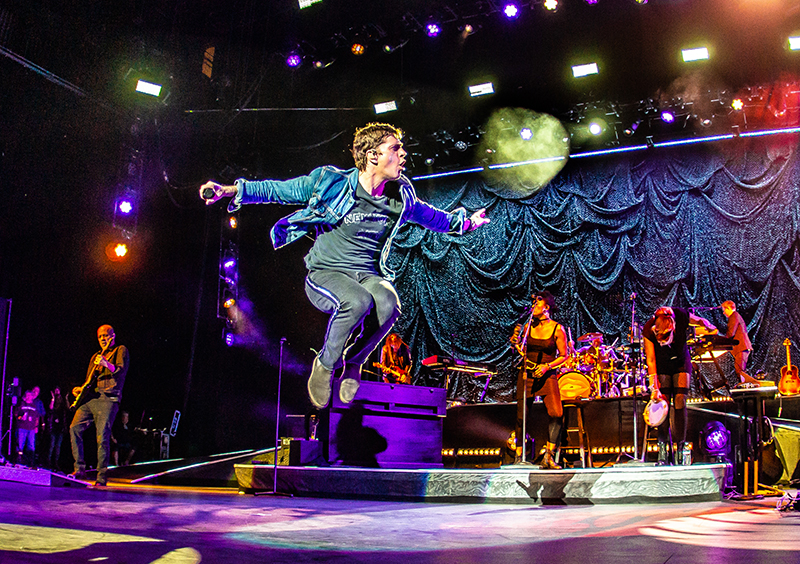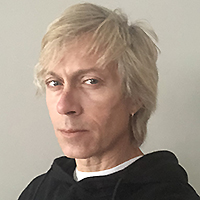For Rob Thomas’ current international tour in support of Chip Tooth Smile the audio crew are loaded – literally. “We’re hauling everything,” explains front of house engineer Mark Chase.
That’s a necessity given that the venues they’re playing vary widely, from theaters and clubs to 9,000-plus capacity venues like the Mohegan Sun Casino Arena. “And everything in between,” Chase adds. “We have about five different setups because there are venues where we’re using the house PA, venues without anything – where I fly all of the Adamson cabinets I need – and mix and match setups where I’ve gone with the house array and amplification but used our front fills, for example.”
The Adamson Systems Engineering main rig, provided by Southern California-based Sound Image, includes up to 36 E15 and a dozen E12 3-way line array modules joined by six E219 dual-19-inch subwoofers. Eight iS7P point source enclosures and eight more SpekTrix loudspeakers can be deployed for out- and front fill, respectively.
Typically, Chase flies the main arrays as far downstage as possible, as Thomas, guitarist Frank Romano and bass player Al Carty spend a lot of time pushing the front of the stage. Beyond that, however, he notes, “Other than each array being hung on two motors, 42 inches apart, using the same fly hardware, every day it’s a whole new ballgame.”
To determine angles and the number of cabinets required for each show, Chase uses Adamson Blueprint AV predictive simulation software. “And that’s calculated for each venue and changes daily,” he says. “At Mohegan Sun, for example, we had the main hang of E15s, the E12 out fills, four iS7P front fills and then the SpekTrix (four per side) on the same plane as the front fills. The SpekTrix were stacked on top of the subs facing at more than a 45-degree angle off the center of the stage to hit the first five rows on each side and cover the gap between the mains and out fills.”
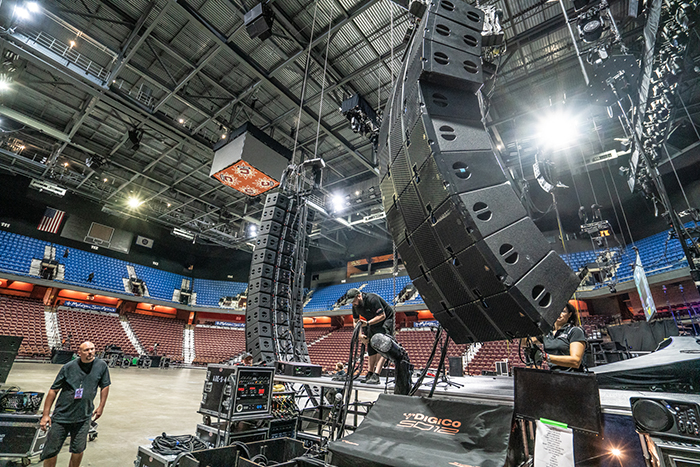
When the E12s are deployed for out fill it’s a 6-box hang per side, Chase adds, but they do double duty at times, when flown as the bottom three cabinets for the main array. Generally speaking, he adds, the tour flies the E15 arrays 28 to 30 feet off center, with three E219 subs at 32 feet off center: “With the E15s, we’re in the 63 Hz range of what they will do, so the subs cross over at 63 or 70 Hz to add what I’m looking for in low end – I want you to feel the kick, the floor tom, the bass and low frequencies from synth world, anything that causes air to move. It’s amazing what those subs do.”
It all depends on the environment and venue, production manager Andrew Crow puts in: “In a lot of theatres we’ve used house PA. And often they have upper balconies, which – even carrying as much PA as we are – we don’t even have enough for.”
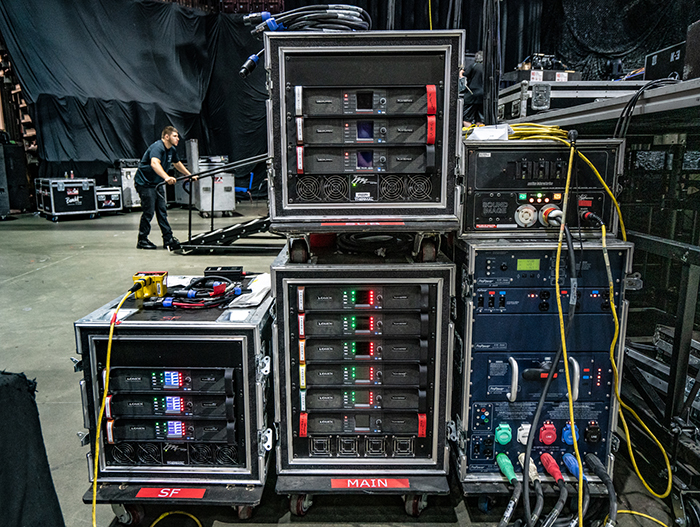
The main arrays are driven by a dozen Lab Gruppen PLM 5K44 amplifiers (“Enough to drive 18 E15s,” Chase notes.) joined by two Lake LM 44 processors. Another pair of racks of four PLM 5K44 amps per side power the out- and front fill loudspeakers.
Finally, the E219 subs are arranged in a cardioid configuration and driven by PLM 20K44 amps. “I’m really only firing four subs forward so I’m lessening my sub load,” Chase says. “But it’s incredible what those 219s reproduce.”
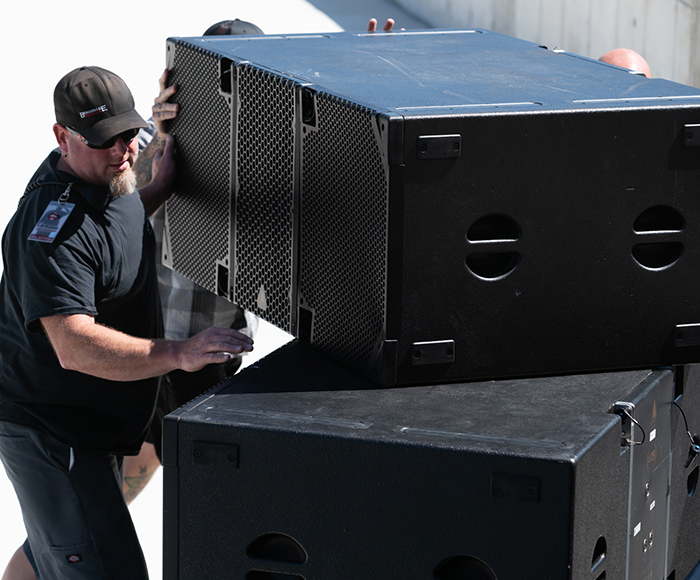
Keeping It Straightforward
The sound team has adopted a lean approach when it comes to the mix of Thomas and the seven-piece band, including no use of plugins. “Plug-ins do incredible things and you can make amazing things happen with them, but I don’t need them to make the gig work,” Chase explains.
Beyond the desire to present as natural sounding a show as possible, it’s a decision informed by issues he’s previously faced. “I’d be mixing and suddenly the mix changes and I’m like, ‘What do I hear? What did I do?’ Nothing’s failed, or come unplugged, the microphone didn’t explode, so you go down the rabbit hole trying to find out what’s happened and then, suddenly, it’s back to normal.”

